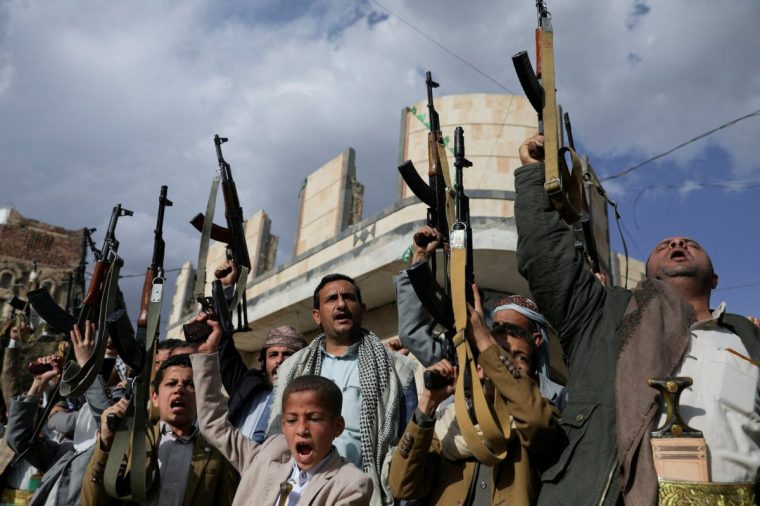As Israel and Hamas prepare to exchange captives, Tehran will be looking on with concern
As world and regional leaders gather in Sharm El-Sheikh for Monday’s Gaza summit, there will be some conspicuous absentees.
Alongside a triumphant Donald Trump will be Egypt’s president Abdel Fattah al-Sissi, the emir of Qatar and Turkey’s president Recep Tayyip Erdogan. This grouping played a crucial role in keeping Hamas at the peace table in Cairo and Doha, despite such provocations as Israel’s lethal missile strike on Hamas negotiators and Qatari security personnel.
Hamas has not been invited to the summit, but can claim that Egypt, Qatar and Turkey represent its interests, and Israel and the Palestinian Authority will also not be there. Iran was invited, according to some accounts, but its president, Masoud Pezeshkian, certainly won’t be attending. Things are not what they once were as far as Tehran is concerned.
When Hamas embarked on its murderous rampage on 7 October 2023, Iran seemed very powerful indeed. Its ‘Axis of Resistance‘ surrounded Israel, supposedly constituting a deterrent force should its key regional rival strike directly at it.
Over the years, weapons were smuggled through Syria, once a strong Iranian ally, to Hezbollah in Lebanon, the most powerful of Iran’s external proxies. Hamas also received prodigious Iranian military funding, estimated to be around $70 million a year, with the weapons moving through cross border tunnels or by sea, with Hamas operatives receiving training in Iran.
That relationship was not sufficiently trusting for Hamas to inform Iran of the 7 October attacks ahead of time, though Iran revelled in them afterwards.
The final member of Iran’s proxy force was the Yemeni Houthi, whose missile arsenal continues to cause concerns for Israel and international shipping in the Red Sea.
However, Israel has in recent years effectively neutralised all of these Iranian proxies.
Bashar al-Assad lives in exile in Moscow while Syria is ruled by a former Sunni jihadist who does not regard Iran with much warmth. Hezbollah was so weakened by Israel’s audacious ‘pager-strikes’ against its senior operatives that it has to be extremely cautious even towards Lebanon’s own government, and Hamas has suffered enormous casualties in Gaza and has lost the ability to drive Israel’s population out of the north through regular missile strikes.

While the Houthis are still firing missiles towards Israel, their political leadership and command-and-control operation have been severely degraded through long-range attacks.
Combined Israeli-US air strikes have also knocked out Iran’s own anti-missile defences and key centres of the Islamic Revolutionary Guard Corps (IRGC), as well as critical elements of Iran’s nuclear programme, along with the engineers and scientists in charge of it.
While hardliners in Iran still direct murderous invective towards Israel, most of the regime’s energies are now directed at detecting and executing Israeli agents, or in insulating its population from the increasing weight of Western sanctions, lest weariness become insurrection.
So where does the ceasefire in Gaza leave Tehran? Iran is obviously vulnerable to future Israeli – and quite possibly US – air strikes should it seek to revive its nuclear programme. But there are also some less obvious outcomes.
An aggressive and regionally hegemonic Israel has propelled the entire region closer together, with even Iran benefitting from rapprochement with Saudi Arabia. Even so, many of these countries, not least Turkey, fear that the Israelis could attack them next.
Iran must also fear that an Israel free of worrying about Gaza could spend more time looking across its border.
Donald Trump’s self-aggrandising vanity also seemingly has no limits. What if he decides not only to reanimate the 2020 Abraham Accords, but to eventually bring Iran within their remit?
A smart Iranian regime would certainly encourage Trump in the belief that the ultimate grand bargain was possible, while relying on a perpetually brazen and diplomatically inept Israel to overreach and anger the US president. After all, thanks to Israel’s aggression towards Qatar, Trump has given Qatar powerful security guarantees and space at an Idaho airbase for its F-15 pilots to practice.
While there might be plenty of strong sentiments towards Israel on the US right, in this administration Gulf Arab money really talks, especially as the reconstruction of Gaza will involve enormous sums of Gulf money and Turkish and Egyptian construction know-how.
Where does that leave Iran? In the short term, isolated and paranoid, Iran will not have much of a voice at tomorrow’s summit, even though Europeans, India and Indonesia will.
In the medium term, Iran will be hoping that Trump is suitably distracted by the events in Gaza and will not want to be dragged into a second war with Iran on Israel’s behalf, even if it would appeal to his Maga base.
Having got its hostages back, Israel has almost no incentives to progress to the second political phase of the Gaza deal. Iran must be hoping that it doesn’t, and that events in Gaza rumble on, enabling Iran to recover from the grievous blows it suffered this summer.
That is about the best the Iranian regime can hope for.
Michael Burleigh is a Senior Fellow at LSE Ideas.
